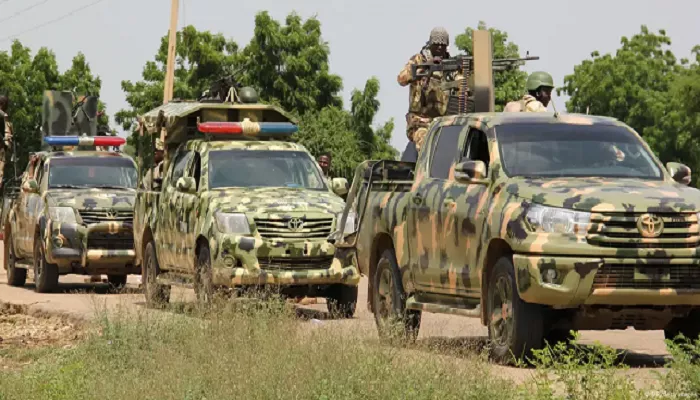The Islamic State West African Province (ISWAP) launched a drone attack on a Nigerian army base in Wajikoro, Borno State, injuring five soldiers, authorities said. The insurgents used four locally modified drones equipped with grenades in the assault.
The incident signals a major shift in ISWAP’s tactics as the group increasingly turns to modern warfare technologies. Residents and experts fear the use of weaponized drones may escalate the already prolonged conflict in northeast Nigeria.
In response, the Nigerian government has banned the unauthorized use of drones, citing national security risks. Officials warn that drones are being used by non-state actors to target military operations and key infrastructure.
Nigeria’s military has recently stepped up efforts to curb the spread of ISWAP and Boko Haram, particularly after foiling an attempt by ISWAP to establish new bases in Plateau and Bauchi States.
How ISWAP Uses Drones
Initially, ISWAP used drones for surveillance and spreading propaganda. Over time, the group gained access to advanced tools like satellite internet and even artificial intelligence for editing its content.
The group split from Boko Haram in 2016 over ideological differences and aligned with the Islamic State, which provided it with resources and technical support.
Experts warn that drone warfare is becoming more common among both state and non-state actors. “ISWAP has used surveillance drones before, but now they’re arming them,” said Vincent Foucher of France’s National Centre for Scientific Research. He noted that the use of drones in modern conflict is growing, especially in wars like the one in Ukraine.
Where ISWAP Gets Its Tech
ISWAP is believed to obtain drones through smuggling, arms trafficking, and by modifying commercially available quadcopters. Samuel Malik of Good Governance Africa said, “They’ve adapted to the military’s tactics by evolving their own strategies. Using drones is part of that evolution.”
Analysts are calling for Nigeria to adopt a more advanced defense strategy. This includes the use of jamming equipment, radar systems, and spoofing technologies to detect and neutralize drone threats.
Taiwo Adebayo, from the Institute for Security Studies, said Nigeria also needs to focus on cutting off ISWAP’s supply routes and finances. He emphasized the importance of combining military force with smarter non-kinetic counterterrorism methods.
While the new drone attack may not change the conflict’s direction, it is a clear sign that ISWAP remains active. “It’s more symbolic than strategic,” said Foucher. “But it shows they’re still operating.”
Long-Term Conflict Impact
The Boko Haram insurgency began in Maiduguri in 2009 and has since killed tens of thousands and displaced over 2.3 million people. ISWAP’s use of drones adds a new layer of complexity to Nigeria’s counterinsurgency efforts.
Although the group still uses commercially available drones, their ability to modify and weaponize them challenges existing military defenses. “If not stopped quickly, ISWAP could launch high-impact attacks while reducing their own casualties,” said Adebayo.
According to Ijasini Ijani, a local resident, ISWAP’s strategy includes looting communities and attacking military outposts. “They’re not just fighting anymore. They’re stealing and expanding their reach.”


